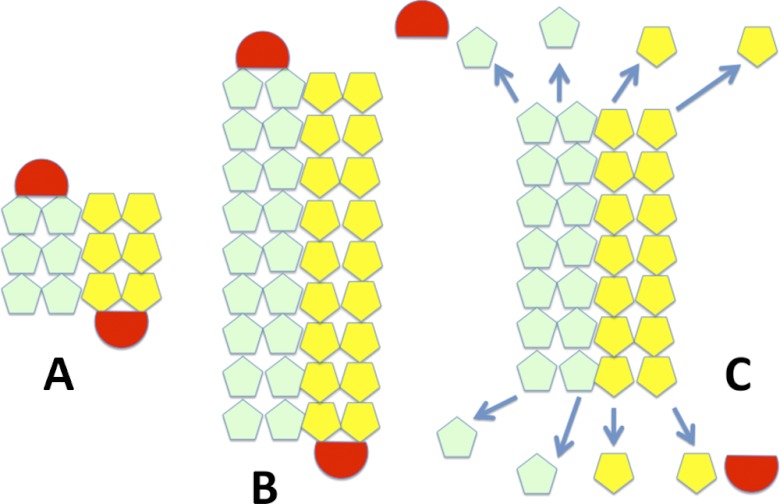FIGURE 10.
Model for plasmid segregation of Alp12. A, initially, a short filament of antiparallel strands, each consisting of two parallel protofilaments, forms (light green and yellow), which can capture a plasmid complex at each end (red). B, Alp12 and other bacterial plasmid segregation proteins (ParM-R1, pSK41-ParM, and AlfA) are polymerizing motors that push plasmids to opposite ends of the bacteria via a polymerization mechanism. The bound plasmid (similar to the ParR-parC complex in ParM-R1) prevents immediate disassembly of the filament, C, filaments that fail to capture plasmids or, after successful plasmid segregation and plasmid dissociation, the unbound filament ends are vulnerable to dynamic instability and filament dissociation (arrows). This scheme allows the Alp12 filament system to repetitively probe the cytoplasm to capture and segregate the pE88 plasmid.

